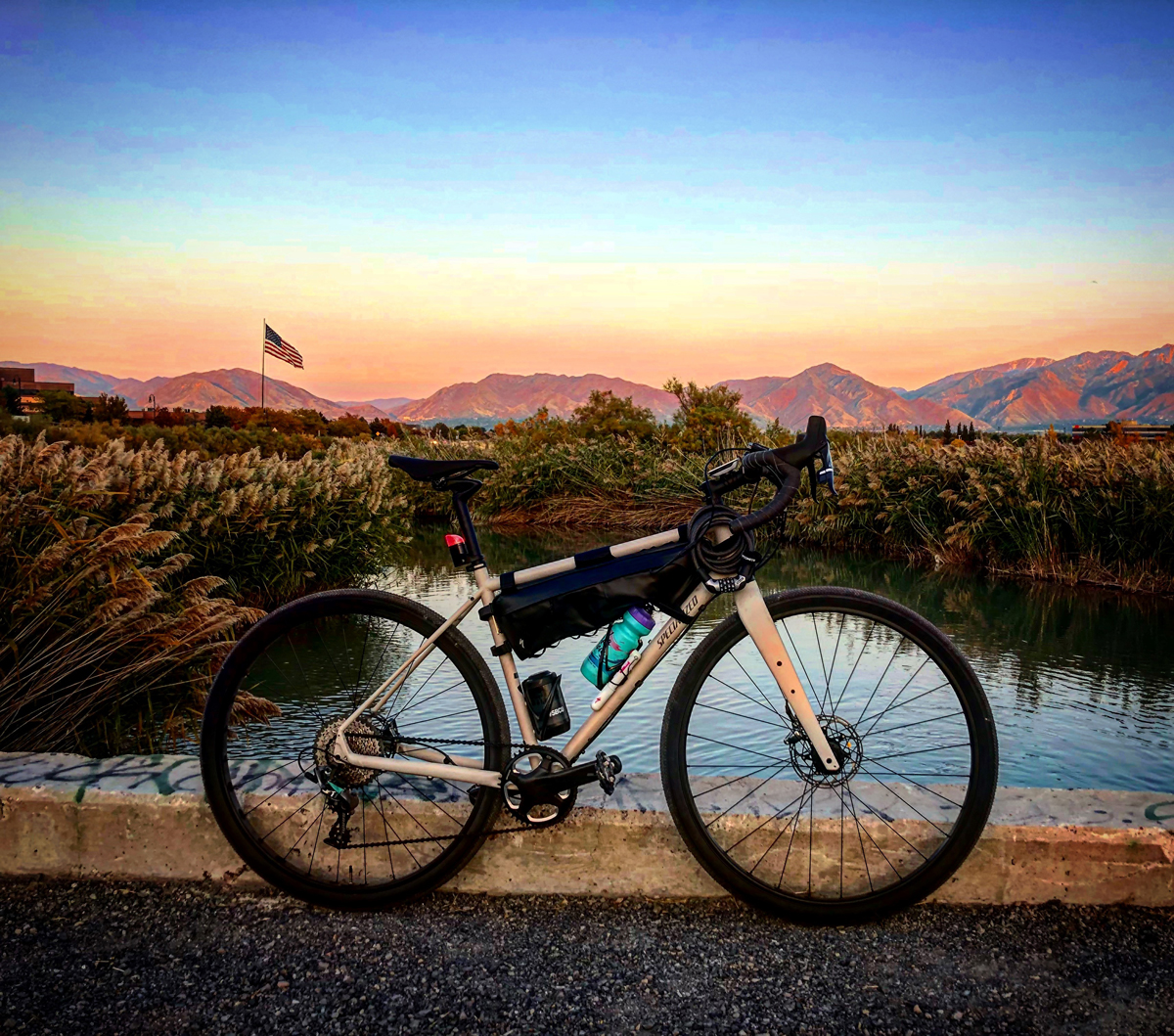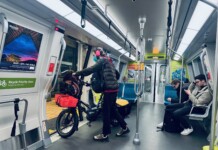By Kira Maicke — ‘Tis the season to get excited about commuting! With temperatures rising, and National Winter Bike to Work Day coming up, here are a few tips for planning a safe, fun commute.
Prep Your Gear
Aside from your typical repair items, (tubes, tire levers, multi tool, CO2 / frame pump, patches) you will want to ensure your lights are charged. I like having a bright red blinking tail light, and a higher lumen front light. When it comes to road riding, 500-750 lumens is a good starting point if you will be relying on the light to brightly illuminate your path. You’ll appreciate that bright path to assist you in navigating around those rim bending pot holes! For those who commute to and from school and work throughout the winter, often times in the dark, a bright front light is even more important. Since you typically have to leave earlier on a bike than in a car, I like to set out my clothes and shoes the night before, to simplify my morning routine. The easier it is to get going in the morning, the more likely you will stick with commuting. (The previous advice may not be as relevant for morning people, but if you’re anything like me, the easier it is to roll out of bed and onto my bike, the better!) Springtime offers additional clothing challenges due to the drastic changes in temperature. Layer in the morning with a light jacket that is easy to pack up for your warmer ride home. In terms of clothing, visibility is key. Many clothing companies offer photo reflective jackets and accessories to make riders more visible to cars in darker lighting. There are also many options available for reflective velcro straps to wrap around ankles and arms, and tape to add to helmets.

Know Your Route
When you need to get to where you’re going by a certain time (work, school, etc ), it is important to plan out a safe and predictable route. Before I commuted for the first time on a work day, I took a trial ride on Saturday to familiarize myself with the route I had planned to take. If you tend to be directionally challenged like me, another great option is to mount your phone on the handlebars of your bike and use GPS. Google Maps has a bike setting that typically plans its bike routes using bike paths and low traffic roads. I maintained my initial route religiously for a few weeks, then began exploring alternative paths on my way home, to learn more about the city and find the quietest, safest roads. Even the most carefully planned predictable route can be derailed by a flat tire, train crossing, or unusually heavy traffic, so I leave an extra 15 minutes early just in case.
Follow The Rules
As cyclists, we are required to follow the rules of the road. This means making full stops at stop signs and red lights, yielding to pedestrians, and signaling. While this is not only necessary and courteous to other vehicles, behaving in a predictable and respectful way will also help keep you safe. Riders should signal to alert changes in direction, and these changes should be carried out in a confident and predictable manner. When changing lanes, be sure to allow plenty of space to move gradually, versus drastically cutting across multiple lanes of traffic. It is illegal, and often more dangerous, to ride on the sidewalk. Cars are not looking for bikes on sidewalks, and many collisions occur when a car turns right, while the rider continues straight. By following the rules of the road, we not only gain the respect of drivers and pedestrians, we are also staying as safe as possible.
Enjoy
The Ride!
Once you get into the groove, commuting can be addicting! Especially in the warmer months, I challenge myself to see how little I can use my car. Make a goal to take your bike on trips under five miles, turn a commute home from work into a group ride to get dinner, or just get some bonus training miles in! One of the best parts about commuting is how easy it is to change up the ride, adding small adventures to the start and finish of your day.
Have fun, and stay safe!












